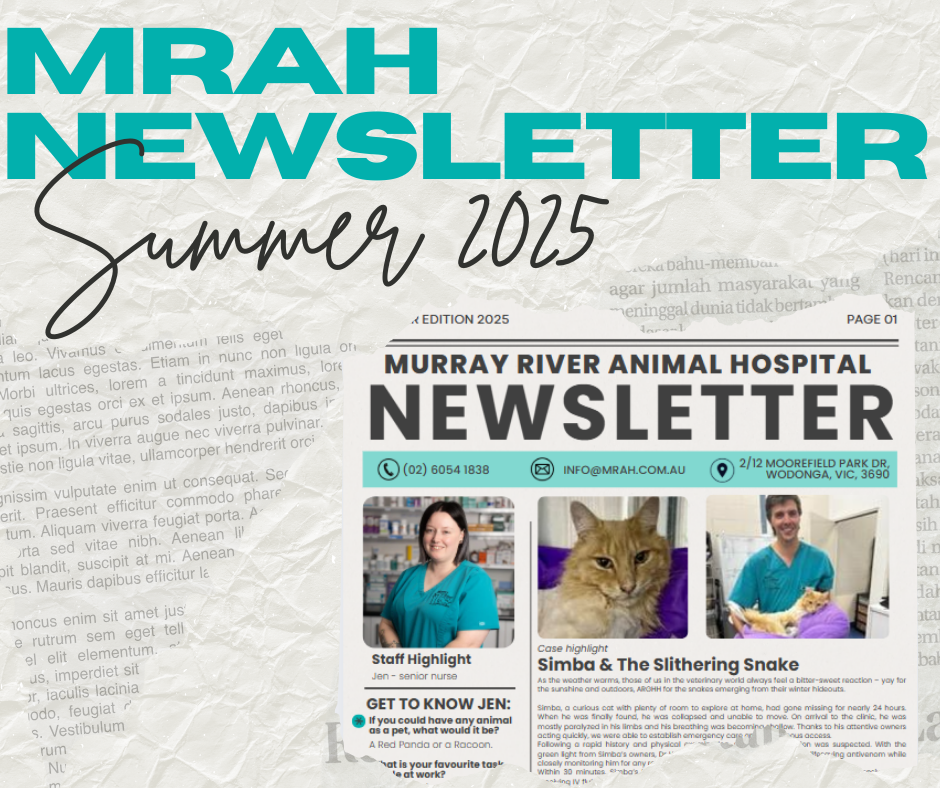Blogs & Newsletters
Explore expert pet care tips, health advice, and seasonal guidance from the vets at Murray River Animal Hospital – trusted by Albury Wodonga pet owners.
Latest posts
Schedule your appointment today!
Caring for your pet starts with a visit. Book your appointment with our friendly team today!

Follow us
Stay connected with us for pet care tips, behind-the-scenes moments, and the latest updates from the clinic. Your pet’s health journey starts here — let’s keep in touch! 🐾

.png)



.png)
.png)

.png)
.png)
.png)





